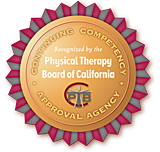
Learning The Method
MNRI® Upper Limbs Reflex and Manual Skill Integration
Course Overview:
Upper limb reflexes begin development in the womb and are among the first reflexes to actively engage after birth, first to protect us from harm, and second (once security is ensured) to allow active exploration of the outside world. As upper limb motor reflexes engage and mature, they form the foundation for the development of learned manual skills. Once basic manual skills become automatic, advanced skills begin to emerge and a child’s movement repertoire expands and advances to include gross motor skills, fine motor coordination, and the motor planning ability necessary to productively function in the world. Manual skills are not the only developmental abilities dependant upon upper limb reflex integration. The visual and auditory systems as well as verbal, written, and general communication-related abilities all depend on adequate upper limb reflex integration. Fine motor coordination systems, including the hands-eyes, hands-auditory, and hands-articulation systems, link fine motor coordination to visual, auditory, and vocal decoding, allowing communication to develop from sounds to words, to conversations, to reading, to writing, to comprehension and more. MNRI Upper Limb Reflex and Manual Skills techniques target reflexes and the underlying neuro-structural system to engage and improve manual, gross, or fine motor skill function and speech delays. Many professionals subject to fatigue or upper limb injury often use the upper limb and manual skill techniques as a stress release program.
Learner Objectives: MNRI Upper Limb Reflex and Manual Skill integration
-
Explain the Masgutova Neurosensorimotor Reflex Integration (MNRI) Method and its connection to the innate nature of the motor reflex system.
-
Explain the role of a reflex and its sensory, motor, and central nervous system mechanisms.
-
Describe how the MNRI process for upper limbs is a facilitation program for genetic motor pattern development.
-
Describe the role of the motor reflex pattern in the development of the nervous system.
-
Explain how the brain engages in protection versus learning and development.
-
Describe how to use the neuro-developmental techniques found in this program to facilitate sensorimotor integration for manual reflex patterns.
-
Explain how a delay or inhibition of any of the natural motor development movement patterns can affect the overall development of a child.
-
Explain how the primary movement system provides protection, ensures survival and generates innate spontaneous movements to sustain and regulate the body.
-
Explain how upper limb reflexes and related manual skills are involved in the formation of conscious motor control within the brain-body system.
-
Demonstrate the role of upper limb reflexes and related manual skill development within the motor reflex system and the neurosensorimotor reflex integration basis for the successful development of manual skills.
-
Describe how fine motor control, hands-eyes, hands-articulation, and hands-auditory systems are necessary for fine motor coordination and self-regulation.
-
Demonstrate how to implement MNRI assessment techniques to determine the integration state of a reflex pattern (i.e. integrated, dysfunctional or pathological) of each upper limb reflex.
-
Demonstrate motivating games and activities to use in conjunction with MNRI techniques to enhance the upper limb integration process.
-
Describe how to create and apply an individual MNRI program for clients with various challenges.
-
Demonstrate strategies to incorporate the use of the MNRI Upper Limb Reflex and Manual Skill course content into daily client and home practice.
-
Demonstrate and apply through supervised hands-on practice strategies for the following reflex patterns addressed in this course; Primary Motor Reflex Patterns • Asymmetric Tonic Neck (ATNR) • Hands Pulling • Robinson Grasp • Babkin Palmomental • Hands Supporting (Parachute) Additional Motor Reflexes • Sequential Fingers Closing • Sequential Fingers Opening Upper Limb Neuro-Structural Integration Techniques • Upper Limbs Segment Stroking • Wrist Flexion Extension Activation • Fingers Compression/Traction • Arm Embracing Squeeze • Babkin Palmomental Activation • Hand/Palm Proprioceptive Stimulation • Wrist-Elbow-Arm Rotations • Pincer Gripping Activation • Finger Base Proprioceptive Stimulation • Forearm Activation • Tripod Gripping Activation • Sequential Arm Opening • Forearm Two Bone Stimulation • Pyramid Finger Activation/Squeezing • Rainbow Arms • Wrist Joint Circular Stimulation • Thumb Stress Release • Variant Hand Grasp Pattern.
MNRI® Upper Limbs and Manual Skills
Day 1:
Hour 1: Movement as a basis of Natural Development
Hour 2: Upper Limb and Manual Skills Development
Hour 3: Robinson Hand Grasp, Babkin and Hands Pulling
Lunch 1 hour
Hour 4: Neuro-Physiological Basis for Development
Hours 5-6: MNRI® Reflex Assessment
Hours 7-8: Foundations for Natural Development
Day 2:
Hour 1: Natural Flow of Intentional and Controlled Movements
Hour 2: Individual Therapy Program
Hour 3: Behavioral, Social, and Cognitive Changes
Hour 4: Up-Down Motor Coordination System
Lunch 1 hour
Hour 5: Development of Lifelong Reflexes
Hour 6-7: Technique practice
Hour 8: Summarize Course Activities




